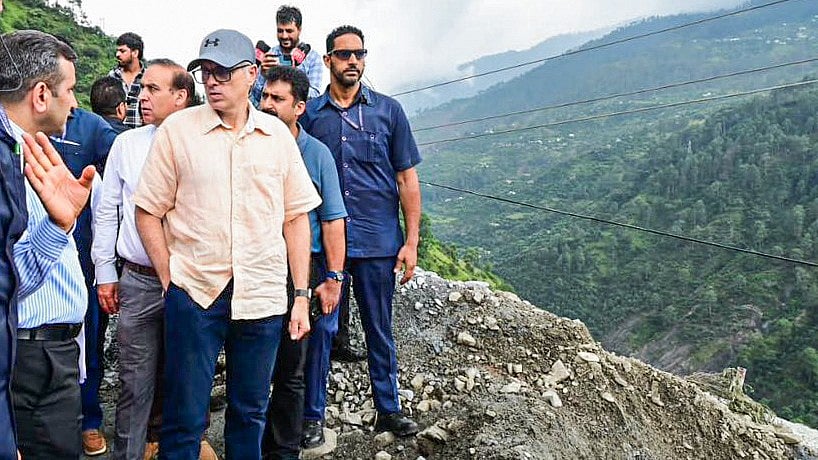India's export performance this year will be very impressive. The manufactured goods exports will cross 400 billion dollars, the highest ever. This is more than 40 percent higher than last year, and five times the growth of our GDP.
It was made possible due to a focused approach by the Commerce Ministry, which had given targets product-wise and country-wise and these were tracked closely.
Even the various Export Promotion Councils (EPCs) for textiles, apparel, engineering goods, and chemicals were given targets. The government also launched the Production Linked Incentive (PLI) scheme which has inbuilt export incentives.
The major export products have been petrol and diesel, gems and jewellery, engineering goods and chemicals. It must be kept in mind that to export 100 dollars’ worth of refined petroleum, we import 90 dollars’ worth of crude oil. Hence, just as exports have done well, so have imports gone up.
Imports of products like crude oil and mobile phones are close to 600 billion dollars. The import of gold too crossed 1000 tonnes which means an outflow of 70 billion dollars of foreign exchange. The total trade deficit this fiscal year will probably reach 200 billion dollars. That represents the dollar shortage i.e; the excess of imports over exports of goods and merchandise.
Thankfully, the country earns dollars even from the exports of services, chiefly software,i.e; IT and IT-enabled services. In addition, there is tourism (which has gone down due to the pandemic) and consultancies. India is also the highest recipient of inbound remittances, which is about 80 billion dollars (about as much as what goes out for gold imports). Hence, after counting dollar earnings from services, we have a smaller deficit.
But still, there is a deficit of dollars. How does that gap get plugged? That is by the inflow of capital flows from investors who put dollars in the stock market, private equity, and loans. The international flow of dollars and balance of payments adjustment are okay in peacetime. But,the Ukraine war has put a spanner in the works.
Stiff sanctions led by the United States, imposed on Russia means Russian exports cannot be paid in dollars. That’s because the payment has to go through New York clearing, and the U.S. refuses to honour any claim from Russian exporters. Even the overseas dollar wealth of Russian oligarchs and the elite are being frozen and not denied access. The U.S. will surely put pressure on Swiss banks to freeze Russian wealth in that country. Suddenly, for the Russians, their big pile of 630 billion dollars in foreign exchange is looking worthless.
That stock of forex is stored in the form of U.S. government-issued treasury bonds, or bonds from the European Union. These bonds can be encashed from those respective sovereign entities, or by trading. But if the sovereign nations who issued those bonds refuse to honour the claim, or repudiate the request for redemption, then those bonds become worthless.
Of course, Russia is not taking this lying down. Oil and gas are its major export earners. And the countries which import oil and gas from Russia are not going to suddenly switch to other suppliers, most notably countries like Germany, and even India.
So, the Russians are offering steep discounts on the price of oil to their customers. India imports less than 1 percent of its crude oil requirement from Russia. But if it is getting oil at half the price, at a time when the oil price has crossed 100 dollars per barrel and threatens to hurt the Indian economy, why not take advantage of the offer? Indeed, this is in India’s interest and will help tame inflation and keep the trade and fiscal deficit in check. The Russians will be happy to see some of their oil being evacuated.
But, India cannot pay the Russians in dollars since the dollar payment has to have a leg in New York clearing, which the Americans will obstruct. So, India and Russia have worked out a rupee-ruble trade deal, where India pays for its oil imports in rupees to Russia, and the Russians, in turn, use those rupees to buy their Indian goods and imports. This will work perfectly if our imports and exports to Russia are evenly balanced. Unfortunately, they are imbalanced.
So, we have to find more goods to export to Russia to use the rupee payment which we make to buy more stuff from us. We have used a similar arrangement for trade with Iran too when it was under sanctions. The Saudi Arabians made a deal with the Americans during the Nixon era, that they would only invoice their oil exports in dollars.
That has been the source of the global dominance of the dollar. During the mid-1970s after the first oil shock, the Saudi Arabia and other Middle East oil producers' earnings were so large in dollars, that they were unable to absorb all the windfall gain even after spending lavishly on arms and ammunition. So those dollars got deposited in Wall Street and recycled as hefty loans to South America, which eventually led to the debt crisis there. This is how petrodollars came into dominance.
The Saudis, for the first time, have agreed to sell oil to China in exchange for Chinese currency. This is similar to the India-Russia rupee ruble trade. If this Saudi oil sale in Yuan to China deal takes off, then other countries may ask for similar treatment. This will surely shake the ground beneath the dollar’s hegemony. We don’t quite have a global currency, nor is there yet a viable alternative to the U.S. dollar.
The world will collectively be worse off if we go back to a quasi-barter economy, by mutually exchanging each other's currency. But given current trends, it looks like the dollar’s undisputed status as “king” of the trading and invoicing world is being challenged.
(Dr. Ajit Ranade is a noted economist)











